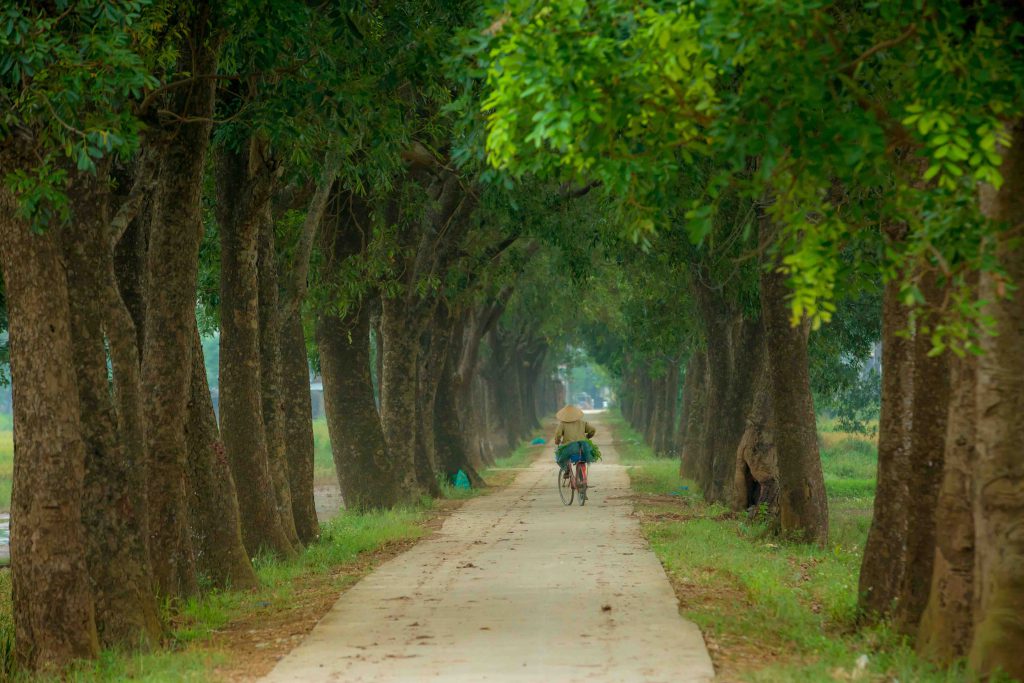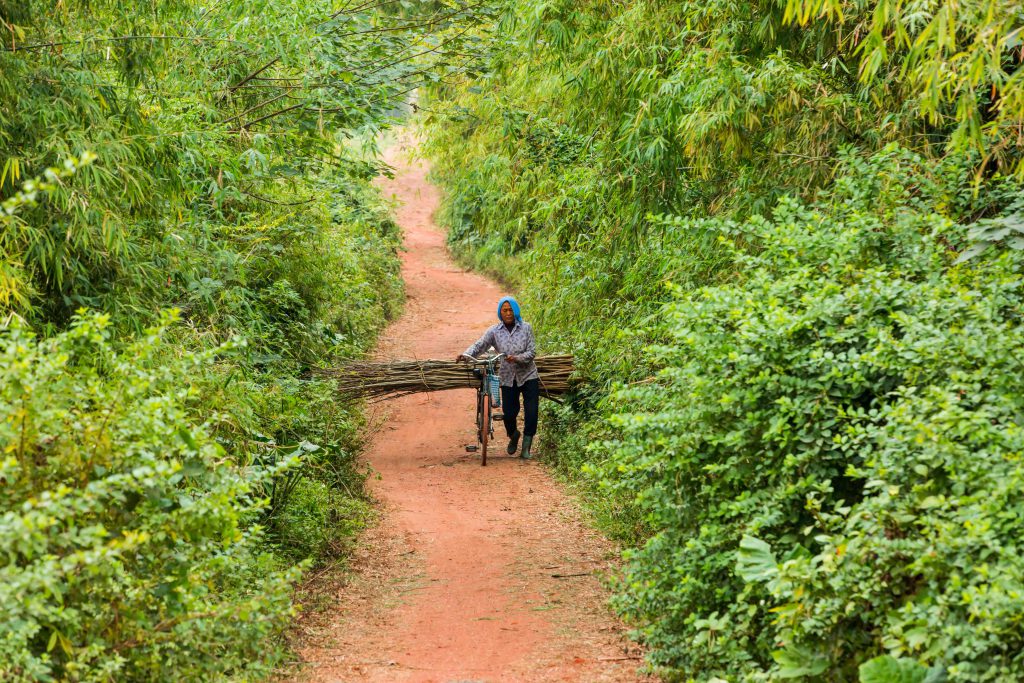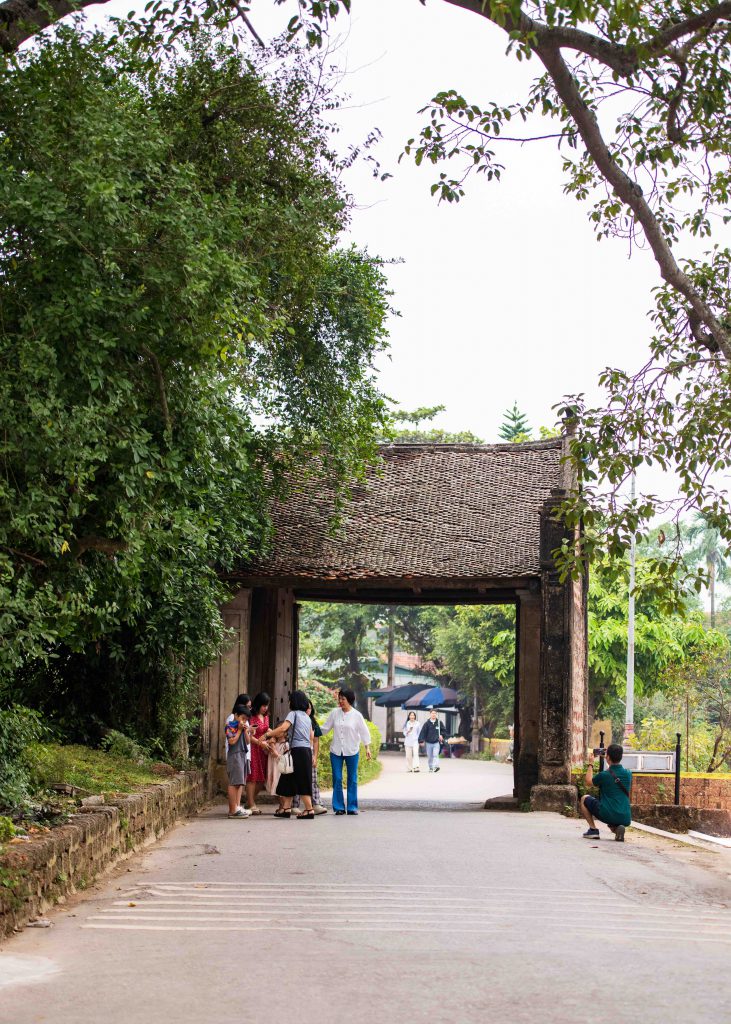Story: Winlinh
Photos: Tue Lam
Walking along country roads, hearing chickens clucking to their friends or pigs grunting as they wander, one feels a deep sense of familiarity. The village road, like an old, gentle friend, quietly supports us through life’s joys and sorrows. These simple, rustic paths hold countless stories of human experiences.

My grandmother told me about ancient wedding customs where, in some places, village tradition required the groom’s family to pay a bridal fee in bricks. For example, villages in Hanoi, such as Trinh Tiet (Dai Hung commune, My Duc district) and Bat Trang (Bat Trang commune, Gia Lam district), practiced the custom of contributing wedding bricks to pave roads. A few villages in Kinh Bac also upheld this tradition of offering bricks as a bride price.
In the past, dirt roads became muddy and slippery when it rained, leading villagers to establish the custom of submitting bricks. If a groom wished to marry a girl from the village, he was required to offer bricks as a gesture to improve the roads where his bride lived. The usual requirement was 200 red bricks. Grooms from the same village submitted fewer bricks than those from outside. Villages often competed to create the most beautiful brick paths, with red bricks adorning their roads.

This custom not only served the common good but also symbolized the groom’s gratitude toward his bride’s parents and neighbors for raising her. Even today, many rural villages still have paths paved with these wedding bricks, preserving the memory of a charming old tradition.
People often say that culture is a road. A road is not just a path but a symbol, reflecting the unique customs of each region. Roads guide people to where they need to go and, more importantly, lead us toward beautiful dreams. A path walked repeatedly becomes a road, and each person shapes their own journey in their mind, in their own way. Who doesn’t have memories tied to alleys or country roads? We navigate them every day, running and playing, only to realize later how significant they are and how deeply connected we feel to them.

The country road is narrow, inviting joyful chats and playful teasing. The rural alley is close-knit, where neighbors easily call out to borrow or lend needed items. These roads are filled with the fragrance of rice and the fresh scents of straw and earth.
In summer, the sunlit paths glow brightly; in autumn, they are blanketed with fallen leaves. In March, red flowers bloom; in May, golden straw embraces the fields. July sees flamboyant flowers blazing, while September brings the gentle unfolding of chrysanthemums. As winter sets in, the road feels longer, quietly whispering to those shivering feet braving the cold. These roads carry profound sadness for fragile souls and hazy nostalgia for unspoken emotions.
The arrival of spring brings the warmth of reunions and love, waking the road from its long winter slumber. Clusters of ferns sprout green from mossy corners, and old bricks seem to rediscover their fragrance of lime mortar. Pebbles rejoice as trees sing songs welcoming the Lunar New Year, filled with overflowing joy and hope.
The road opens its arms to greet those returning home, the surrounding landscape adorned in spring’s new attire. The early spring sun is gentle, casting a soft glow that nurtures budding plants and sparkles along the country road. The road remains close-knit, familiar, and uplifting, embodying the essence of home and renewal.
The village paths remain as calm and quiet as ever, offering a sense of peace. The country road, simple and pure, stirs nostalgia and cherished memories in every child who has left home, along with a deep longing for their homeland. In such moments, one wishes for just one path that leads back home.










